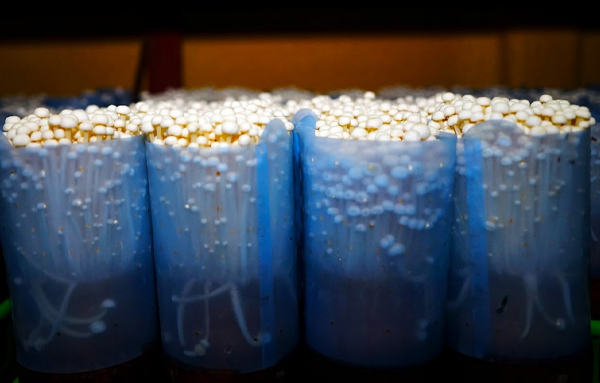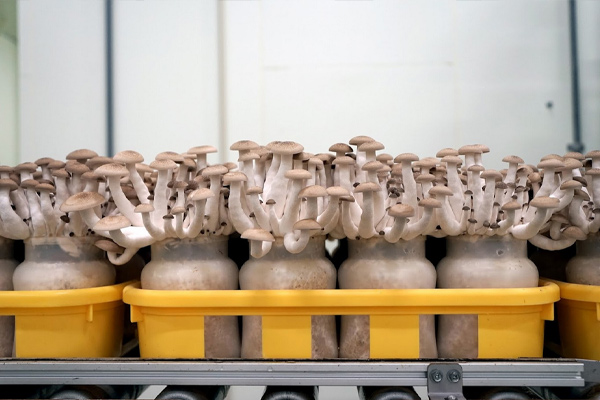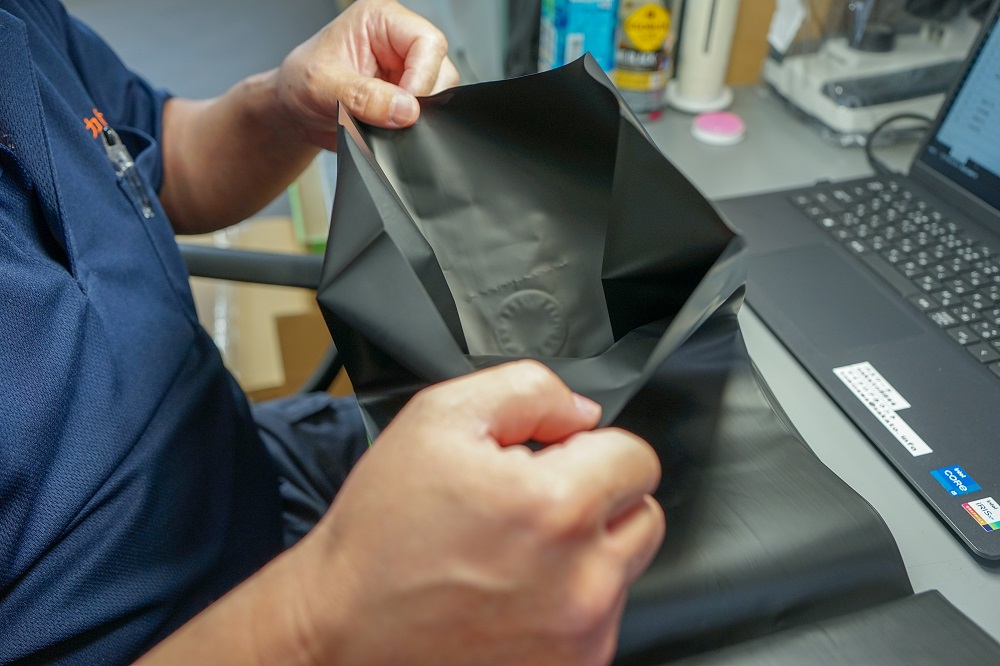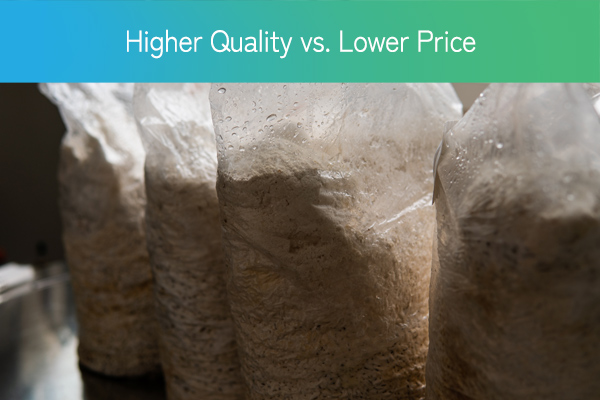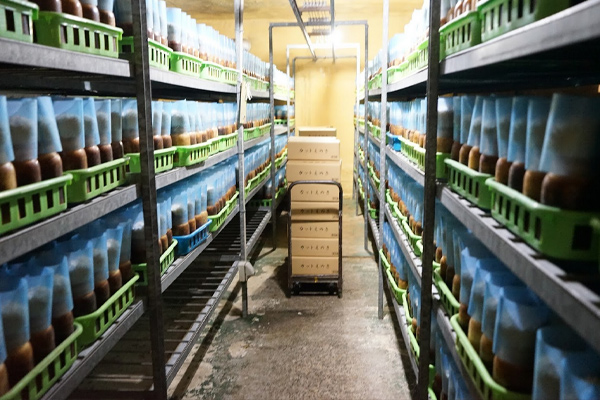After sterilizing the substrate, rolling shelves are unloaded out the other end of the autoclave and into a clean room with reverse laminar airflow. There, other machines can then unload the trays from the shelf back onto a different conveyor system, which runs through an inoculation machine.
The inoculation machines are simply brilliant: each row of caps in the tray is raised up, spawn injected, and then the machine places the caps back on immediately. The now-inoculated bottle of substrate then continues along conveyors. Other machines automatically palletize the trays into large square stacks, then human workers in fork lifts move the pallets over to incubation rooms.
The politics of mushroom growing
Mushroom farming is very difficult, repetitive, and physically demanding work. Fewer people in modern developed countries want to do this kind of work, and those that do, don’t want to do it for low wages.
In Japan, most mushroom farming takes place in rural areas and growers only offer low wages, but outside Japan, most growers are paying huge premiums on labor, above and beyond minimum wages that already dwarf the pitiful levels in Japan (for many rural prefectures, under 900 yen an hour). Yet, even in Japan labor staffing issues are a tremendous headache, and mushroom prices are so low that farms can’t afford labor-intensive cultivation methods and stay in business (a key difference from China, where mushroom farming is an employment engine for rural areas with chronic high unemployment and unequal economic development).
Again, Japanese farms find it more economical to invest in machine lines that cost a few million dollars and then run on a third of the labor as would otherwise be required, and they are paying 1000 yen (8.65 USD) an hour. We know several U.S. and European farms pay 45 USD an hour or more for labor.
The most advanced, cutting-edge systems in Japan now just need another driver in a forklift to move fully incubated pallets from the incubation room to another machine, which then breaks down the pallet. Through the use of conveyors, the trays are then brought through fungal scraping machines, which remove the uppermost layer of harder, older mycelium and spray water to serve as a shock to the mycelium to induce fruiting. After this, the trays are reshelved in fruiting rooms. Minimal labor use.
The magic of mushroom-growing in bottles
We can only describe bottle systems with one superlative: spectacular.
The biggest problem we at SALAI have encountered with their application in Western markets is this: bottle systems are too productive. Bottle systems can grow enormous quantities of mushrooms on limited land and with minimal labor. Think towering fruiting rooms with shelving seven or eight levels high. A farm staff of 100-120 people on a 6-acre plot of land can easily grow 8000-9000 metric tons of exotic mushrooms per year.
This is because once it is time for harvesting, the same automated systems can empty shelving, and other conveyors can take trays to automated harvesting machines. The vast majority of labor at most bottle cultivation farms has nothing to do with the demands of growing and largely has to deal with the packaging room and the logistics of storage and shipping. Thus, it all adds to layouts that look mind-bogglingly complicated on paper but are straightforward to work on and manage in practice.
This is, more so than price or the technical difficulty, why European and American growers hit a snag. Small and mid-size growers don’t have national and regional distribution networks. In many cases, the demand isn’t there yet, either. You can’t use bottle cultivation systems for shiitake, which are the most popular and well-known exotic mushroom variety in Western markets. Compared to building a bag cultivation system farm and a bottle cultivation system farm, the cost-efficiency analysis is often not worth it on small-scale levels.
Still, we at SALAI think that bottle cultivation systems are an indispensable part of this industry and what Japan offers. A decade of lightning-fast growth and entire generations of younger consumers more interested in fungi and ethnic cooking and more willing to try new things, paired up with huge numbers of vegans, vegetarians and flexitarians entering the consumer market of adults, has helped the market for exotic mushrooms in the U.S. and Europe quickly mature. We think it is only a matter of time before major growers and agricultural firms begin investing in large-scale, low-cost cultivation of exotic mushrooms. For that, bottle cultivation systems are the only way to go.
For more information or guidance on which approach is best for your farm,
get in touch with the experts at SALAI.
